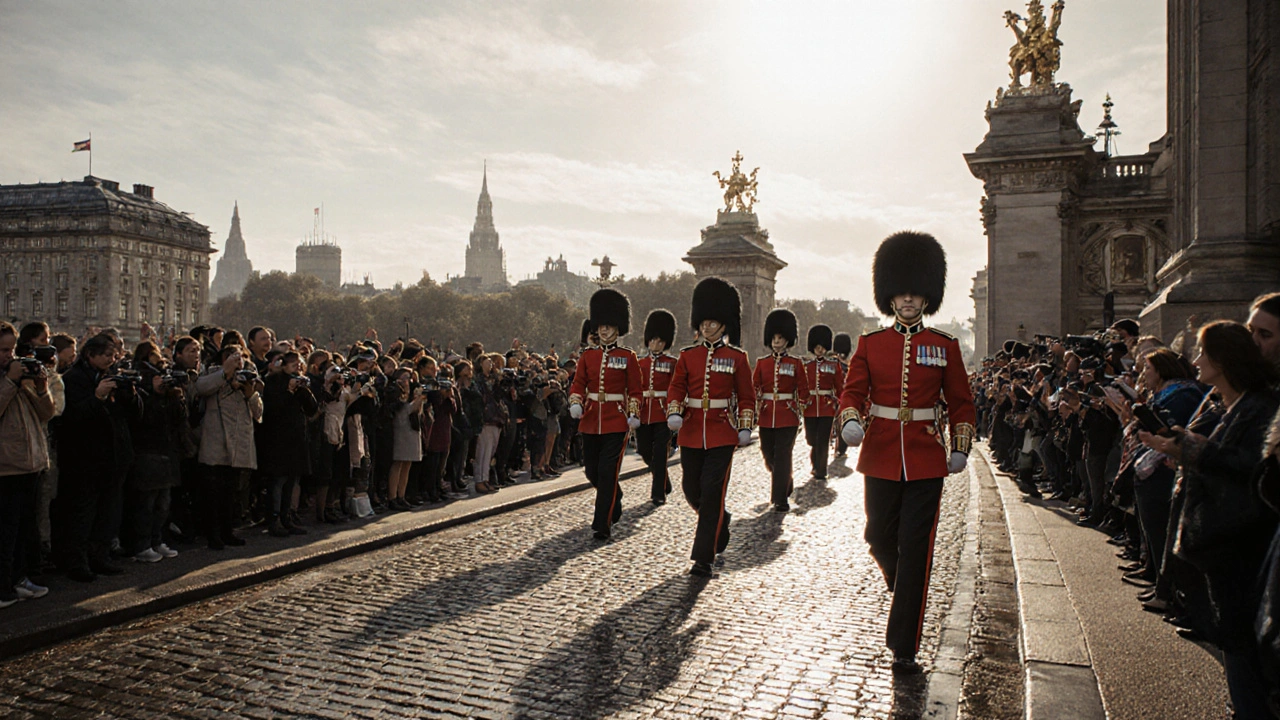Royal Guard in London: Watch the Changing of the Guard and Understand Its History
When you see the royal guard, the ceremonial soldiers who protect the British monarch’s official residences. Also known as Queen’s Guard, it’s not just a tourist photo op—it’s a living military tradition dating back over 500 years. These soldiers aren’t just for show. They’re real, active-duty members of the British Army, trained to handle weapons, stand for hours in any weather, and follow strict protocols. Their bearskin hats, red tunics, and polished boots aren’t costumes—they’re part of a uniform that hasn’t changed much since the 1800s.
The changing of the guard, the formal handover ceremony where one guard detachment replaces another happens daily at Buckingham Palace and every other day at Horse Guards. At Buckingham Palace, it’s the big one—crowds gather before sunrise to catch the band marching in, the slow step, the precise salute. But if you want a quieter, just-as-authentic experience, head to Horse Guards in Whitehall. It’s less crowded, just as precise, and you can walk right up to the guards without jostling for space. The Horse Guards, the historic building that houses the Household Cavalry and serves as the ceremonial entrance to St. James’s Palace is often overlooked, but it’s where the real military precision shines.
Why does this still matter? Because it’s not about spectacle—it’s about continuity. These guards represent a link to Britain’s past, from the Tudors to today. They carry rifles with live ammunition (yes, really), and they’re trained to respond to threats, even while standing still. The whole thing looks like theater, but it’s backed by discipline, duty, and history. And while you’re watching, notice the details: the way they never blink, the rhythm of their steps, the silence between commands. That’s not acting. That’s training.
You don’t need a ticket to watch. Just show up early, especially in summer. Arrive 30 minutes before the scheduled time—Buckingham Palace’s ceremony starts at 11:00 AM, but lines form by 9:30. Bring water. Wear flat shoes. And if you’re there on a rainy day, you’ll see something even more impressive: the guard doesn’t cancel. They stand. Even when it pours.
Behind every guard is a story—some are from Scotland, others from Wales or Northern Ireland. Many have served in combat zones. They’re not just symbols. They’re soldiers. And when you see them, you’re not just watching a tradition. You’re witnessing a living piece of London’s identity.
Below, you’ll find real, practical guides on how to get the best view, when to go to avoid crowds, where to find the quietest spots, and what else to see nearby—like the Royal Mews or the Churchill War Rooms—that tie into this same world of history, ceremony, and quiet strength.
